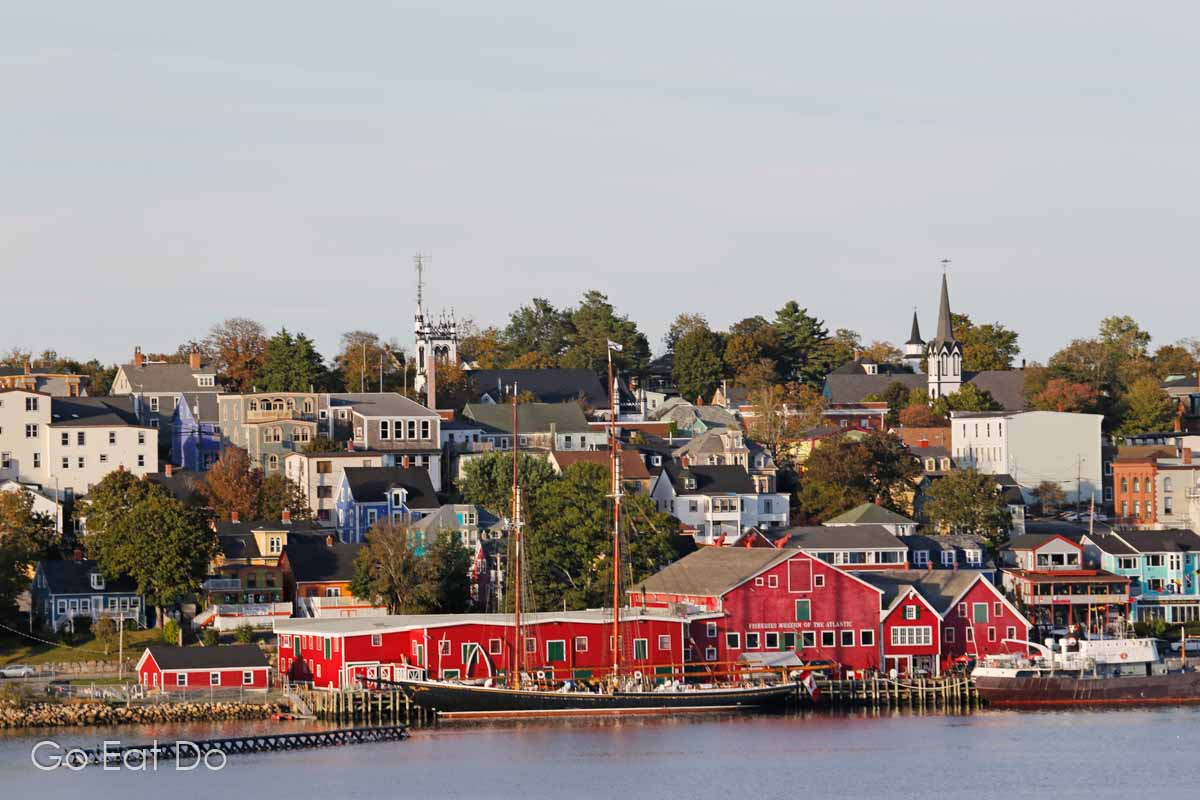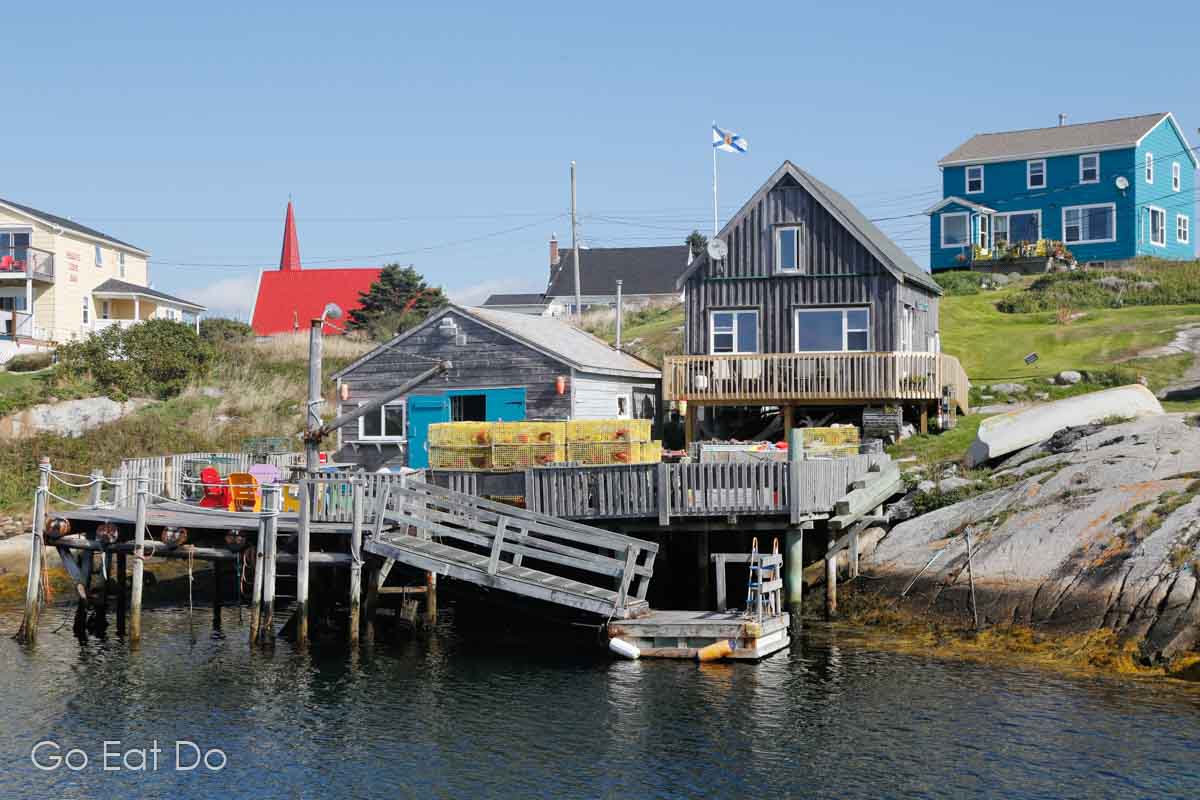Stuart Forster looks at must-try experiences in Nova Scotia that will help make a memorable and enjoyable holiday in the Canadian province.
Disclosure: This post has been paid for by Tourism Nova Scotia.
Some of the links below and banners are affiliate links, meaning, at no additional cost to you, I will earn a commission if you click through and make a purchase.
International travel is limited because of restrictions put in place to help stop the spread of COVID-19. That doesn’t prevent us from dreaming and planning future trips and holidays.
Nova Scotia is the second smallest of Canada’s provinces. Approximately two-thirds the size of Scotland, Nova Scotia’s varied landscapes, heritage and cuisine make it an enjoyable destination for a leisurely driving holiday or tour.
Here’s a look at 11 experiences in Nova Scotia to consider as part of your itinerary:

1 – Head to sea on a whale-watching tour
Atlantic Canada presents numerous opportunities to board boats and take whale watching tours.
The summer tourism season coincides with the time of year that whale numbers peak off Nova Scotia’s coast. Humpbacks, pilot whales, North Atlantic right whales, finbacks and minke whales are frequently spotted in Nova Scotian waters.
Nova Scotia whale watching tours bring opportunities to learn about the whales and their marine habitat from knowledgeable, passionate guides.
The tours may also bring opportunities to see dolphins coursing along the ocean’s surface and tremendous views of the coastline.
Whale-watching tours depart from Halifax and elsewhere in the province. Why not board a tour from one of the ports of Cape Breton Island after driving the scenic Cabot Trail?
Find out more about why I enjoyed Ocean Expeditions Zodiac Whale Cruise in the post exploring Nova Scotia beyond Halifax.

2 – Watch the sun rise over Georges Island in Halifax
Georges Island National Historic Site is in Halifax Harbour. Once part of the city’s defences, the island opened to the public in 2020. You can take self-guided tours of the island. Guided tours of tunnels that are part of Fort Charlotte are available on weekends.
Rising early presents an opportunity to see downtown Halifax while it’s relatively quiet. Save for the occasional runner there’s every chance you’ll have the normally busy boardwalk to yourself.
The soft morning light makes it an ideal time for photography along the waterfront. With the right weather, you may see a golden sky above Georges Island.
The relative quietude of early morning makes it a lovely time of day to appreciate the city’s vibe.

Set aside at least a couple of days to explore Halifax. The Canadian Museum of Immigration at Pier 21, Maritime Museum of the Atlantic and Halifax Citadel count among key attractions. Break up the sightseeing in the provincial capital’s pubs, cafés and restaurants.

3 – Ride North America’s oldest saltwater ferry route
The ferries crossing Halifax Harbour present outstanding views of the Halifax skyline. That includes the Queen’s Marque, an upscale waterfront development that hosts The Muir, Halifax’s first Autograph Collection hotel.
A service between Halifax and Dartmouth has operated since 1752. Taking the Alderney ferry puts you a short walk away Battery Park Beer Bar and Eatery.
The triangular World Peace Pavilion in the Ferry Terminal Park features stones and bricks from countries around the world. It’s a good spot to look over towards Halifax.

4 – Learn about the lifecycle of lobsters
The fishing industry plays a significant role in the economic and social life of Nova Scotia. Thousands of people’s livelihoods are dependent on fishing, whose story is told at the Fisheries Museum of the Atlantic in Lunenburg.

Lobsters are the province’s most valuable seafood export. Visit Pictou Lobster Hatchery at the Northumberland Fisheries Museum to learn how eggs develop into adults. The tiny lobsters develop into larvae and moult their shells during their precarious early lives.
It takes between six and eight years for lobsters to grow large enough to be legally caught.
5 – Bite into a lobster roll
Tearing apart a lobster shell is easier than it looks. Those served in lobster dinners are often pre-cracked, which helps make the meat accessible. Nonetheless, it makes sense to don a bib to pull them apart.
If working the meat out of the shell doesn’t appeal but you do want to dine on lobster there are plenty of options in Nova Scotia’s restaurants.
Lobster rolls feature dressed meat served as a sandwich. Chefs tend to put their own twist on the classic dish. That means it’s worth trying them in more than one of Nova Scotia’s restaurants.
Captain Kat’s Lobster Shack in Barrington has twice been named winner of the South Shore Lobster Crawl Lobster Roll Challenge.

6 – Make your own lobster souvenir
Franz Fraitzl is an artist who creates sculptures from recycled metal at his sizable workshop at Boullier’s Point.
He offers visitors opportunities to make souvenirs under his guidance. I crafted a lobster claw bottle opener while Franz chatted about how he repurposes materials in his work.
I found it a fascinating and fun way of spending time with an artist and learning about his vision. The decorative object that we made is an unusual but practical souvenir from Nova Scotia.

7 – Get behind the wheel for a Nova Scotia road trip
Nova Scotia’s scenic driving routes are ideal for providing the framework for sightseeing in the province.
The Cabot Trail, on Cape Breton Island, is widely regarded as one of Canada’s best scenic driving routes.
Don’t plan too much driving in any given day. Covering less ground means more time to experience the province. Limiting time behind the wheel leaves more time to explore points of interest, dine and interact with locals.
Following the Lighthouse Route is a lovely way of enjoying the coastline west of Halifax. Peggy’s Cove, Lunenburg and Mahone Bay are all on the Lighthouse Route.

8 – Explore Nova Scotia’s history
Several of Nova Scotia’s historic sites employ reenactors to bring stories to life. They include Highland Village Museum and the Fortress of Louisbourg National Historic Site.
Sherbrooke, on the Eastern Shore, flourished because of the timber trade, shipbuilding and gold finds in the late 19th century. At Sherbrooke Village, 25 original buildings are maintained.
People in Victorian costumes convey what life was like in Sherbrooke more than a century ago. Tradespeople including a blacksmith and printer demonstrate how they work and answer questions from onlookers.

9 – Paddle in Kejimkujik National Park
Stone carvings known as petroglyphs indicate the significance of Kejimkujik National Park and National Historic Site to the people of the Mi’kmaw First Nation. You can follow ancient portage routes during a canoe tour of the park often called Keji by Nova Scotians.
Camping in the national park while touring by canoe brings an opportunity to appreciate the night sky of Nova Scotia’s only dark skies preserve.
Being out on the water with only the rhythmic splash of the paddle and birdsong as background sounds is a truly relaxing experience.
If paddling isn’t your thing you can follow trails alongside the Mersey River.
Located near Port Joli, Kejimkujik National Park Seaside is approximately 100 kilometres (62 miles) from the main park. It has sandy beaches and scenic trails.

10 – Kick off your shoes and stroll on a beach
The water of the North Atlantic is by no means the warmest in the world but it’s enjoyable to walk ankle-deep in it.
Nova Scotia’s sandy beaches feel good underfoot during summertime. The longest in the province is the exotic-sounding Martinique Beach Provincial Park, about an hour’s drive from Halifax.
Partially rocky, the beach at Lawrencetown Beach Provincial Park is a popular summer destination. If you’re into surfing, this beach is worth visiting.

11 – Step aboard Bluenose II
The fishing schooner and racing ship Bluenose was launched at Lunenburg in 1921. After a season of fishing, she participated in the International Fisherman’s Trophy, winning against the American challenger. The Bluenose retained the trophy for the next 17 years.
The Bluenose features on Nova Scotian licence plates and Canadian 10-cent coins.

To celebrate the centenary of the ship’s launch, the Royal Canadian Mint released a special collection of coins. The exhibition about the ship at the Fisheries Museum of the Atlantic has been refreshed.
The Bluenose sank off Haiti in 1948. A successor was built to the original plans at Lunenburg’s Smith and Rhuland Shipyard, where the original Bluenose was laid down. As part of the Bluenose Centennial, Bluenose II visited ports across Nova Scotia and the Maritime Provinces during 2021.
Nova Scotia holidays
Cox and Kings, Travel Nation and Wexas are among the operators offering tailor-made holidays in Nova Scotia from the United Kingdom.
Booking flights, ground transport and accommodation independently is another way of tailoring a holiday in Nova Scotia.
Nova Scotia map
Zoom into the Nova Scotia map below to view destinations in the province:
Books about Nova Scotia
If you’re planning a trip to Nova Scotia, you may find the following books handy:
Lonely Planet Nova Scotia, New Brunswick and Prince Edward Island.
A History of Nova Scotia in 50 Objects.
Nova Scotia: Shaped by the Sea – A Living History.
Canada’s Electronic Travel Authorization (eTA)
Most United Kingdom passport holders flying to Canada for leisure or business require an Electronic Travel Authorization (eTA) to enter the country. Some people need visas. Once approved, eTAs are valid for up to five years.
Apply for your eTA via the official Government of Canada website before booking travel. Don’t leave it until you’re at the airport as the approval process can take several days, sometimes requiring supporting documentation.
Be aware: Any site charging more than CAD$7 to process an ETA application is not the official Government of Canada website.

Flights to Nova Scotia
Direct flights operated by Air Canada from Halifax to London Heathrow (LHR) take approximately five hours and 55 minutes.
Westjet operates flights to Nova Scotia from London Gatwick. Direct seasonal services (April into October) operate from Dublin and Glasgow.
Transfers to Halifax Stanfield International Airport (YHZ) are possible from the likes of Toronto Pearson Airport (YYZ) and Montréal-Pierre Elliott Trudeau International Airport (YUL).

Video about the attractions
You can watch my video about 11 must-try experiences in Nova Scotia on YouTube:
Further information
See the Nova Scotia website for more ideas about things to do in Halifax and elsewhere in the province.
The Destination Canada website also has information about tourist attractions in Nova Scotia.
Stuart Forster, the author of this post, was presented with the 2017 British Annual Canada Travel Award (BACTA) for Best Online Content. Stuart is available for editorial and commercial writing commissions.
Thanks for reading this post about must-try experiences in Nova Scotia. Check out my recent post about exploring Nova Scotia beyond Halifax.
Photos illustrating this post are by Why Eye Photography.
If you enjoyed this post why not sign up for the free Go Eat Do newsletter? It’s a hassle-free way of getting links to posts on a monthly basis.
‘Like’ the Go Eat Do Facebook page to see more photos and content.
A version of this post was initially published on Go Eat Do on 13 February 2021.




